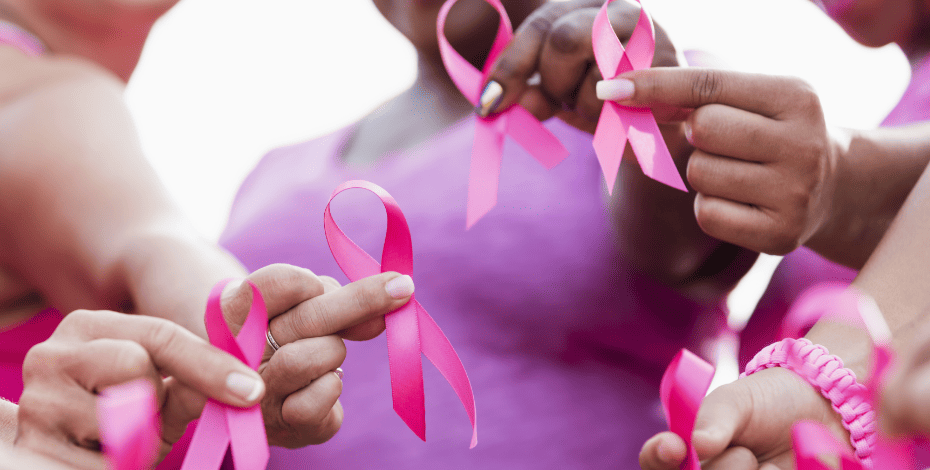References for August 2023
5 facts about post–intensive care syndrome
- Herridge MS, Azoulay É. Outcomes after Critical Illness. N Engl J Med. 2023 Mar 9;388(10):913-924. doi: 10.1056/NEJMra2104669. PMID: 36884324.
- Anita R. Bemis-Dougherty , James M. Smith: What Follows Survival of Critical Illness? Physical Therapists' Management of Patients With Post–Intensive Care Syndrome. Physical Therapy, Volume 93, Issue 2, 1 February 2013, Pages 179–185.
- Needham DM, Davidson J, Cohen H, Hopkins RO, Weinert C, Wunsch H, Zawistowski C, Bemis-Dougherty A, Berney SC, Bienvenu OJ et al: Improving long-term outcomes after discharge from intensive care unit: report from a stakeholders' conference. Crit Care Med 2012, 40(2):502-509.
- Pandharipande PP, Girard TD, Jackson JC, Morandi A, Thompson JL, Pun BT, Brummel NE, Hughes CG, Vasilevskis EE, Shintani AK et al: Long-term cognitive impairment after critical illness. N Engl J Med 2013, 369(14):1306-1316.
- Iwashyna TJ, Ely EW, Smith DM, Langa KM: Long-term Cognitive Impairment and Functional Disability Among Survivors of Severe Sepsis. JAMA 2010, 304(16):1787-1794.
- Herridge MS, Tansey CM, Matte A, Tomlinson G, Diaz-Granados N, Cooper A, Guest CB, Mazer CD, Mehta S, Stewart TE et al: Functional disability 5 years after acute respiratory distress syndrome. N Engl J Med 2011, 364(14):1293-1304.
- Wade DM, Howell DC, Weinman JA, Hardy RJ, Mythen MG, Brewin CR, Borja-Boluda S, Matejowsky CF, Raine RA: Investigating risk factors for psychological morbidity three months after intensive care: a prospective cohort study. Critical Care 2012, 16(5):R192-R192.
- Davidson JE, Jones C, Bienvenu OJ: Family response to critical illness: postintensive care syndrome-family. Crit Care Med 2012, 40(2):618-624.
- Kahn JM, Angus DC: Health policy and future planning for survivors of critical illness. Curr Opin Crit Care 2007, 13(5):514-518.
- Denehy L, Lanphere J, Needham DM. Ten reasons why ICU patients should be mobilized early. Intensive Care Med. 2017 Jan;43(1):86-90. doi: 10.1007/s00134-016-4513-2. Epub 2016 Aug 25. PMID: 27562244.
- Puthucheary Z.A, Rawal J, McPhail M, Connolly B, Ratnayake G, Chan P, et al. Acute skeletal muscle wasting in critical illness. JAMA, 310 (2013), pp. 1591-1600.
- Griffiths RD, Jones C. Recovery from intensive care. BMJ 1999;319:427-9.
- Hermans G, Van Mechelen H, Clerckx B, et al. Acute outcomes and 1-year mortality of intensive care unit-acquired weakness. A cohort study and propensity-matched analysis. Am J Respir Crit Care Med. 2014;190(4):410–420
- Dinglas VD, Aronson Friedman L, Colantuoni E, et al. Muscle weakness and 5-year survival in acute respiratory distress syndrome survivors. Crit Care Med. 2017;45(3):446–453
- Stiller K. Physiotherapy in intensive care: an updated systematic review. Chest. 2013 Sep;144(3):825-847. doi: 10.1378/chest.12-2930. PMID: 23722822.
- Labeau SO, Afonso E, Benbenishty J, Blackwood B, Boulanger C, Brett SJ, Calvino-Gunther S, Chaboyer W, Coyer F, Deschepper M, François G, Honore PM, Jankovic R, Khanna AK, Llaurado-Serra M, Lin F, Rose L, Rubulotta F, Saager L, Williams G, Blot SI; DecubICUs Study Team; European Society of Intensive Care Medicine (ESICM) Trials Group Collaborators. Prevalence, associated factors and outcomes of pressure injuries in adult intensive care unit patients: the DecubICUs study. Intensive Care Med. 2021 Feb;47(2):160-169. doi: 10.1007/s00134-020-06234-9. Epub 2020 Oct 9. Erratum in: Intensive Care Med. 2021 Apr;47(4):503-520. PMID: 33034686; PMCID: PMC7880913.
- Franks ZM, Alcock JA, Lam T, Haines KJ, Arora N, Ramanan M. Physical Restraints and Post-Traumatic Stress Disorder in Survivors of Critical Illness. A Systematic Review and Meta-analysis. Ann Am Thorac Soc. 2021 Apr;18(4):689-697. doi: 10.1513/AnnalsATS.202006-738OC. PMID: 33075240.
- Fuke R, Hifumi T, Kondo Y, Hatakeyama J, Takei T, Yamakawa K, Inoue S, Nishida O. Early rehabilitation to prevent postintensive care syndrome in patients with critical illness: a systematic review and meta-analysis. BMJ Open. 2018 May 5;8(5):e019998. doi: 10.1136/bmjopen-2017-019998. PMID: 29730622; PMCID: PMC5942437.
- van Beusekom I, Bakhshi-Raiez F, de Keizer NF, Dongelmans DA, van der Schaaf M: Reported burden on informal caregivers of ICU survivors: a literature review. Critical Care 2016, 20(1):16.
- Kahn JM, Le T, Angus DC, et al. The epidemiology of chronic critical illness in the United States. Crit Care Med 2015;43: 282-7
- Haines KJ, Beesley SJ, Hopkins RO, McPeake J, Quasim T, Ritchie K, Iwashyna TJ. Peer Support in Critical Care: A Systematic Review. Crit Care Med. 2018 Sep;46(9):1522-1531.
- Mikkelsen ME, Jackson JC, Hopkins RO, Thompson C, Andrews A, Netzer G, Bates DM, Bunnell AE, Christie LM, Greenberg SB et al: Peer Support as a Novel Strategy to Mitigate Post-Intensive Care Syndrome. AACN advanced critical care 2016, 27(2):221-229.
- Sevin CM, Boehm LM, Hibbert E, Bastin AJ, Jackson JC, Meyer J, Quasim T, Bakhru RN, Montgomery-Yates A, Slack A, Still M, Netzer G, Mikkelsen ME, Iwashyna TJ, Haines KJ, McPeake J. Optimizing Critical Illness Recovery: Perspectives and Solutions From the Caregivers of ICU Survivors. Crit Care Explor. 2021 May 12;3(5):e0420. doi: 10.1097/CCE.0000000000000420. PMID: 34079948; PMCID: PMC8162533.
- Linda Denehy, Sue Berney, Laura Whitburn, Lara Edbrooke. Quantifying Physical Activity Levels of Survivors of Intensive Care: A Prospective Observational Study. Physical Therapy, Volume 92, Issue 12, 1 December 2012, Pages 1507–1517.
- Ding D, Lawson KD, Kolbe-Alexhttps://australian.physio/inmotion/misnomer-pain-sensitivityander TL, Finkelstein EA, Katzmarzyk PT, van Mechelen W, Pratt M; Lancet Physical Activity Series 2 Executive Committee. The economic burden of physical inactivity: a global analysis of major non-communicable diseases. Lancet. 2016 Sep 24;388(10051):1311-1324.
The misnomer of pain sensitivity
- Beales D, Mitchell T, Moloney N, et al. Masterclass: A pragmatic approach to pain sensitivity in people with musculoskeletal disorders and implications for clinical management for musculoskeletal conditions. Musculoskelet Sci Pract 2020: Available online 18 July 2020, 10221.
- Bradley LA, McKendree-Smith NL, Alberts KR, et al. Use of neuroimaging to understand abnormal pain sensitivity in fibromyalgia. Curr Rheumatol Rep 2000;2(2):141-148.
- Coderre TJ, Melzack R. Increased pain sensitivity following heat injury involves a central mechanism. Behav Brain Res 1985;15(3):259-262.
- Gracely RH, Ambrose KR. Neuroimaging in fibromyalgia. Best Pract Res Clin Rheumatol 2011;25(2):271-284.
- Hardy JD. The nature of pain. J Chron Dis 1956;4(1):22-51.
- Hardy JD, Wolff HG, Goodell H. Studies on pain: a new method for measuring pain threshold: observations of spatial summation of pain. J Clin Invest 1940;19:649-657.
- Hardy JD, Wolff HG, Goodell H. Pain Sensations and Reactions. Baltimore MD: Williams & Wilkins, 1952.
- Keele KD. Pain sensitivity and the pain pattern of cardiac infarction. Proc R Soc Med 1967;60:17-19.
- Kim HJ, Yang GS, Greenspan JD, et al. Racial and ethnic differences in experimental pain sensitivity: systematic review and meta-analysis. Pain 2017;158(2):194-211.
- Mogil JS. The genetic mediation of individual differences in sensitivity to pain and its inhibition. Proc Natl Acad Sci 1999;96:7744-7751.
- Nielsen CS, Staud R, Price DD. Individual differences in pain sensitivity: measurement, causation and consequences. J Pain 2009;10(3):231-237.
- Parkhouse J. Holmes CM. Assessing post-operative pain relief. Proc R Soc Med 1963;56:579-585.
- Spearman C. ‘Footrule’ for measuring correlation. Br J Psychol 1906;2:89-108.
- Stahnisch FW. Objectifying ‘pain’ in the modern neurosciences: a historical account of the visualization technologies used in the development of ‘algesiogenic pathology’, 1850-2000. Brain Sci 2015;5:521-545. DOI: 10.3390/brainsci5040521
- Whipple GM. New instruments for testing discrimination of brightness and of pressure and sensitivity to pain. J Educ Psychol 1910;1(2):101-106.
© Copyright 2025 by Australian Physiotherapy Association. All rights reserved.





